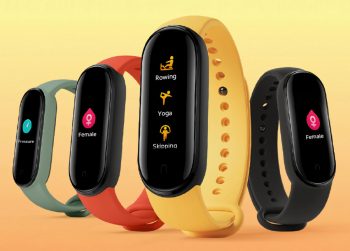
Best fitness trackers in 2020
Wear OS is showing signs of life again in 2020 with the Qualcomm Snapdragon Wear 4100 platform possibly delivering the performance and efficiency that has been missing, but for many of us, a fitness tracker is still the better wearable option to pair with our Android phones. Fitness trackers can deliver the features most people are looking for from their wearable like basic notifications and of course fitness tracking at a more affordable price and with considerably better battery life.
Let’s take a look at some of the top options in the market today, regardless of your goals with a wearable there is likely one on this list that will get the job done.
Fitbit is virtually synonymous with fitness tracking and for good reason, the company has been putting out solid hardware and one of the best software experiences for about a decade now. While they have definitely stepped into the smartwatch territory with options like the Versa 2, the Versa Lite, and the Ionic, the company still has solid options in the true fitness tracker market like the Inspire line and the Charge line.
I’m going to concentrate on the Inspire HR as it is a more recent release than the Charge 3 and I think has a slightly more refined design, but most of what I will have to say also applies to the Charge so if you like the slightly wider look of it then, by all means, it’s a great option as well and only about a $20 price premium these days.
For those that took a look at the Xiaomi Mi Band 4 above, the basic look of the Inspire HR probably seems familiar, so beyond the brand name what makes it worth the extra roughly $60? The two biggest factors are going to be the overall look of the device and the Fitbit app.
Looking to the hardware first, the Inspire has a much sleeker design, the core unit clips into the band at the top and bottom rather than sliding in as it does with the Mi Band 4. This is also more secure, while I didn’t have a problem with the Mi Band 4 falling out of the band, it is at least a concern and of course, you can charge the Inspire HR without removing it from its band.
And if you do want to swap out your original bands, there are dozens of options available for between $8 and $20 that will completely change the look of your Inspire HR for different occasions or use cases.
Battery life is still solid at 5 days, enough to at least cover a weekend away without your charger and of course the small size and battery life make the Inspire HR an excellent sleep tracker. The screen is a step down from the Mi Band 4 as it is a simple black and white OLED, while the color screen does make things a bit more interesting, this doesn’t obviously detract from the delivery of information on this small screen.
The Inspire HR features connected GPS that pairs with your phone to deliver superior tracking results outdoors. Fitbit also has its SmartTrack feature which does a solid job of recognizing your activity (cycling, swimming, running) without needing to trigger the tracking yourself. This is part of what makes Fitbit devices excellent fitness trackers as you just need to put them on and go about your day without managing about them.
The Inspire HR also handles basic notifications like calls and texts and you can optionally turn on granular notifications for specific apps if you have another messaging client or any app that you always want to see notifications for immediately.
Finally, there’s too much to cover about the Fitbit app, but this is a big selling point for Fitbit hardware as the app offers both a social network component if you know other people that use Fitbits as well as simply a very well thought out and fully featured app. It not only of course tracks all of your fitness and sleep activity and provides you with useful insights into these, but it can also track your caloric intake to help you with an overall diet plan. Women may appreciate the female health tracking features that Fitbit added a couple of years ago.